

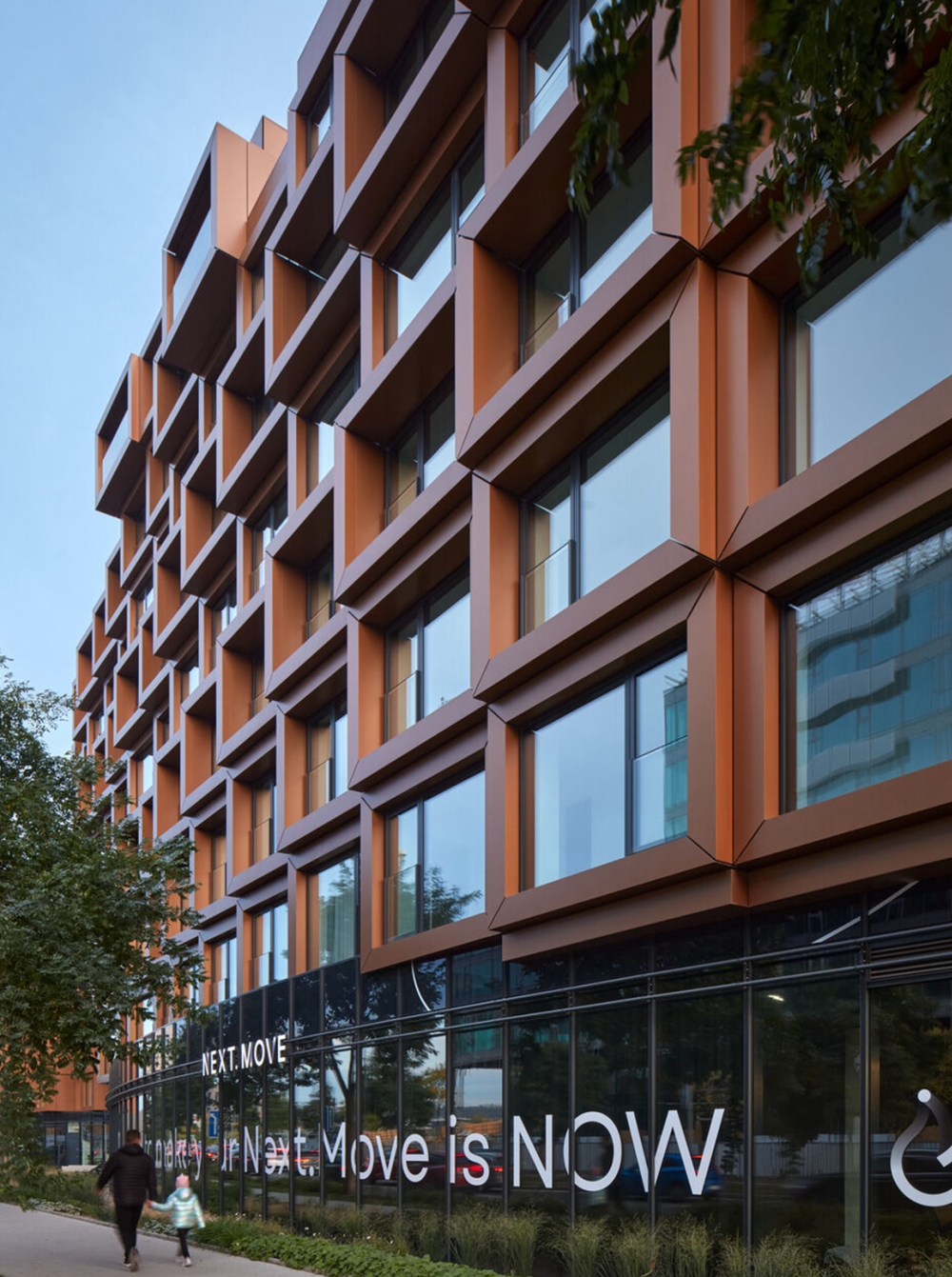
The window frame is the transition layer between the wall and the window, serving to fix and prevent the collapse of surrounding walls. As an important component of the building facade, regardless of the style, architects have a common understanding for exterior windows - the thinner the window frame, the better.
From ancient times to the present, "delicacy" has always given people a delicate, dynamic, and transparent beauty. Nowadays, many designers also regard "delicacy" as beauty, and a highly transparent exterior window can better reflect the exquisite sense of architecture. However, when this "window frame" style facade design appears, "Yingying's grip is as boneless as a bone" is probably going to be reversed. If you don't believe the picture above, you can take a closer look.
Fragment Apartment
Qarta Architektura
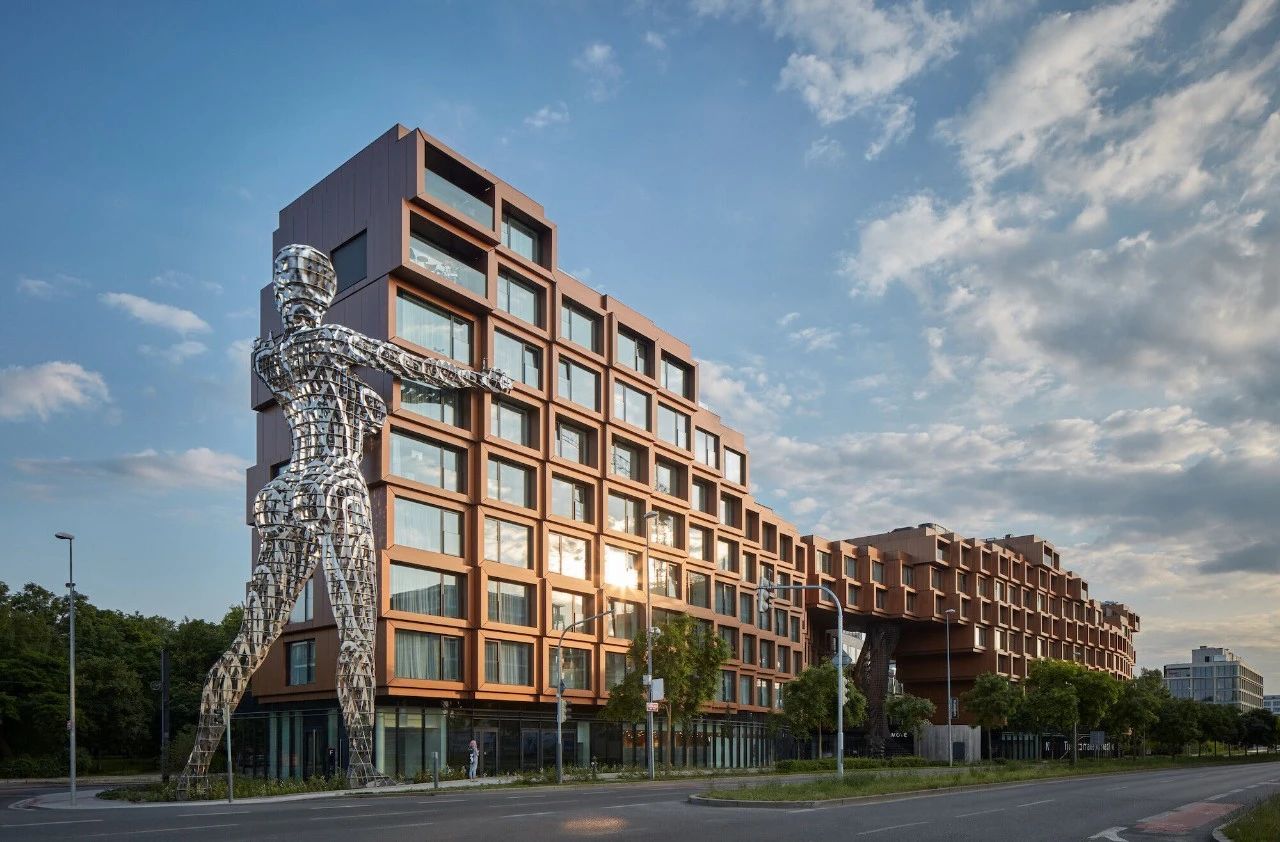
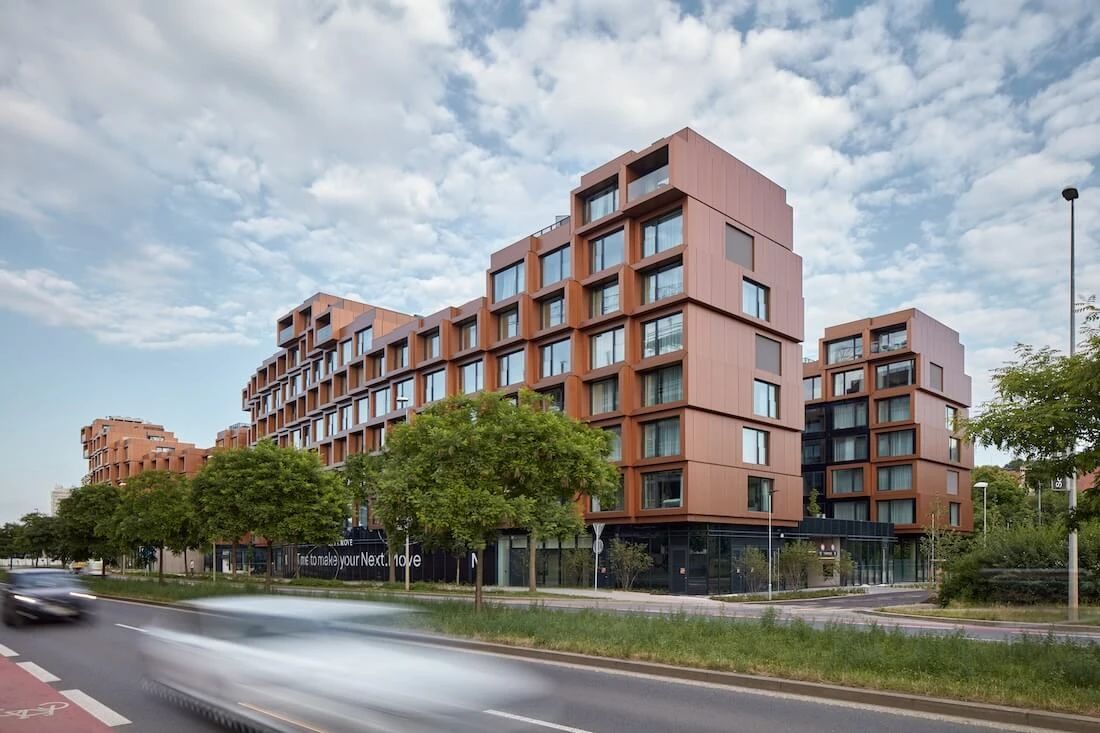
Fragment Apartments ©Boys PlayNic
Although Karlin was originally an industrial area in Prague, it has undergone significant changes in the past few decades. The role it plays in daily life in the center of Prague largely depends on this ongoing transformation. Considering all the requirements of modern life, Carlin has become a popular place for housing, work, and leisure.
The entire region is gradually revitalized, which means that the original buildings of Old Carlin can be preserved. On the other hand, the tall and independent buildings in the modernist Invalidovna residential area form a balance against the traditional urban block layout. Fragment Apartment is located at the boundary between these two areas. Their goal is to find completeness and harmony in the contrasting architectural history.

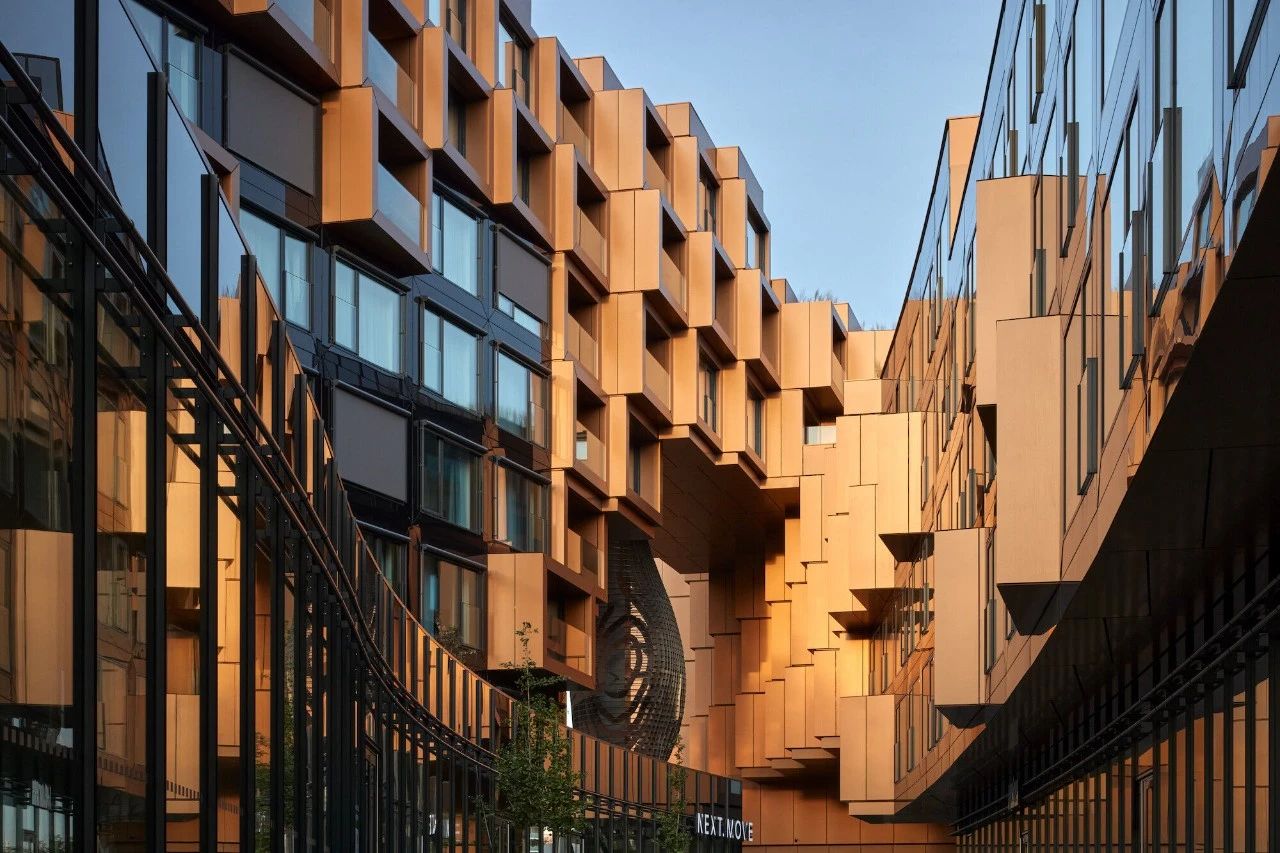
Building volume and layout ©Boys PlayNic
For the new Fragment apartment, the architect designed a unique and visually striking building that responds to both past and future environments. In addition to form and function, the natural connection with the surrounding public spaces also extends the building outward, making it easier to approach and perfecting it visually and functionally. The commemorative David Cherny sculpture is an integral part of the project, and it was an artistic collaboration that took place from the beginning of the project.
The overall architectural form consists of two intersecting arms or wings, reflecting the trapezoidal shape of the plot and the characteristics of surrounding development. This fragment became a manifestation of the transition or intersection between two worlds. At one end, two volumes imply the pattern of urban blocks; On the other hand, the concept of 'single entity quantity' is reminiscent of isolated modernist techniques. The pixelated nature of the facade also implies the disintegration process of urban blocks.
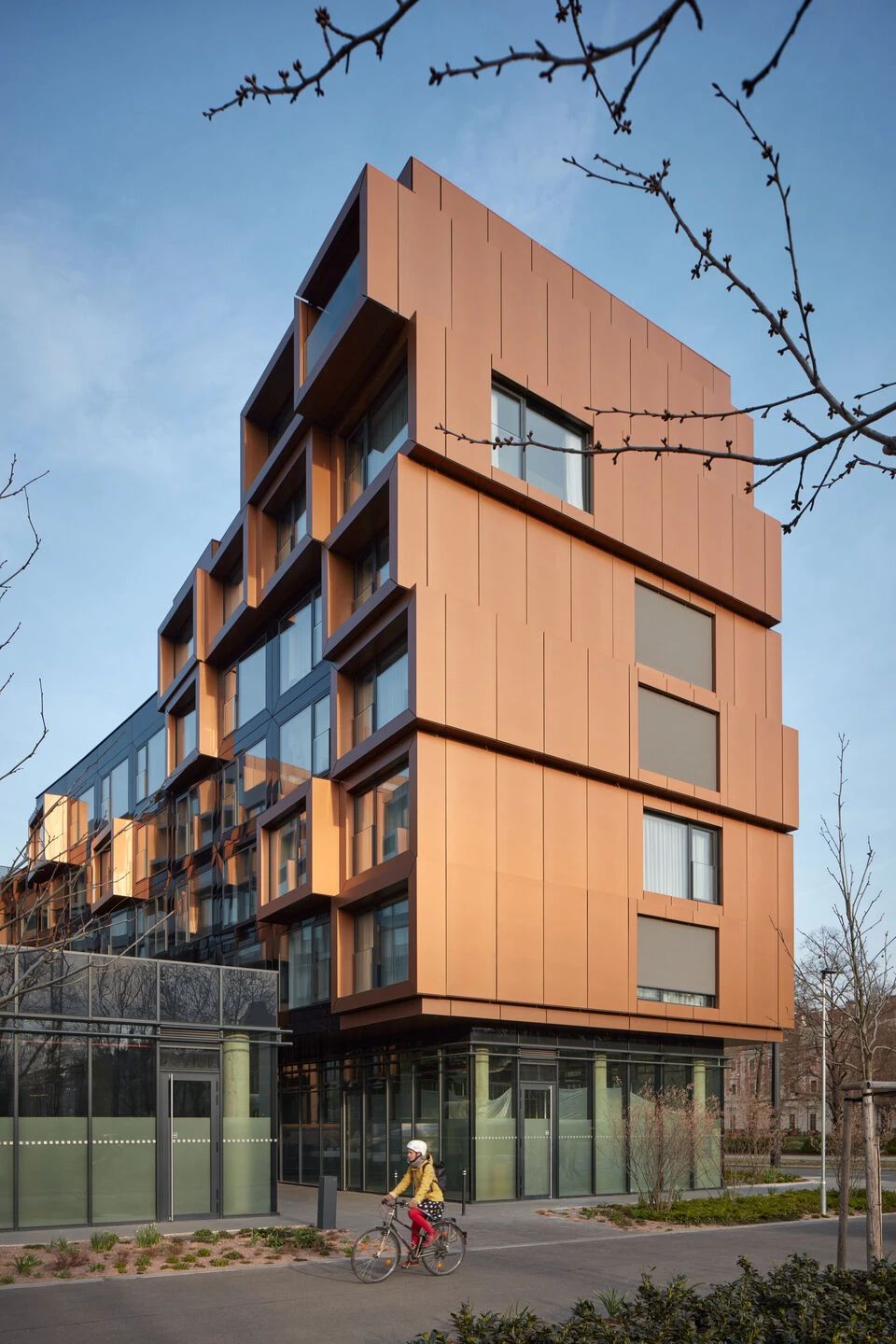
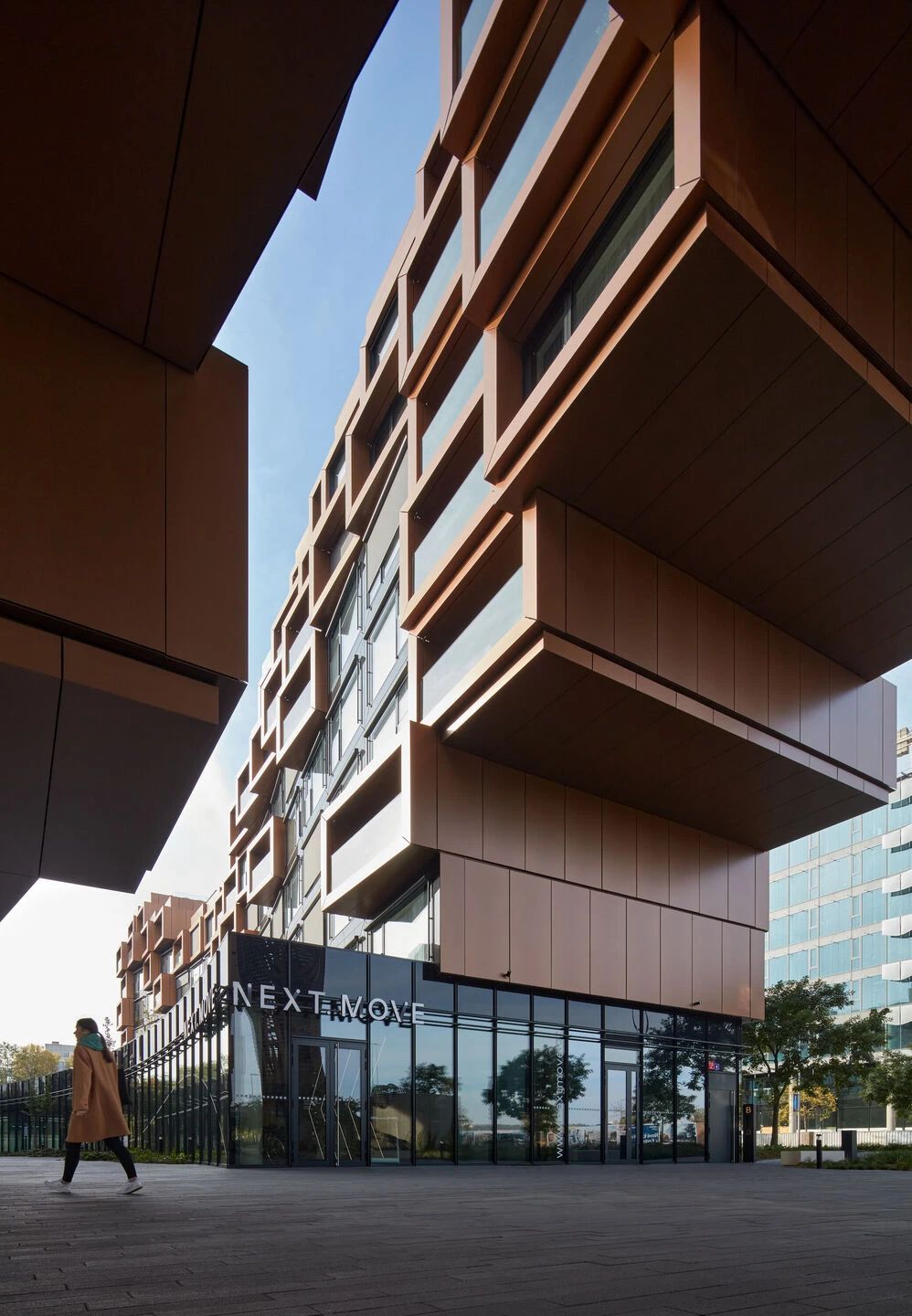
Cantilevered building entrance©Boys PlayNic
The architect stated that the close connection with the historic Invalidovna building was another decisive moment in the development of the project. Despite our respect for the architectural quality of Invalidovna and the vitality of this unique venue, we have chosen a completely different positioning for the Fraqment apartment, which is a contemporary imprint. We facilitated an equal dialogue - a dialogue between existing and new buildings - as our contribution to the renovation of the Karin district. We believe that this dialogue is a logical prerequisite for achieving high-quality development.
The floor plan shows that two volumes are co located on a unified transparent base at the bottom level. Extending upwards, the dynamic changes of each segment reflect the changes in indoor and outdoor environments. This loose and playful form is based on the environment rather than form.
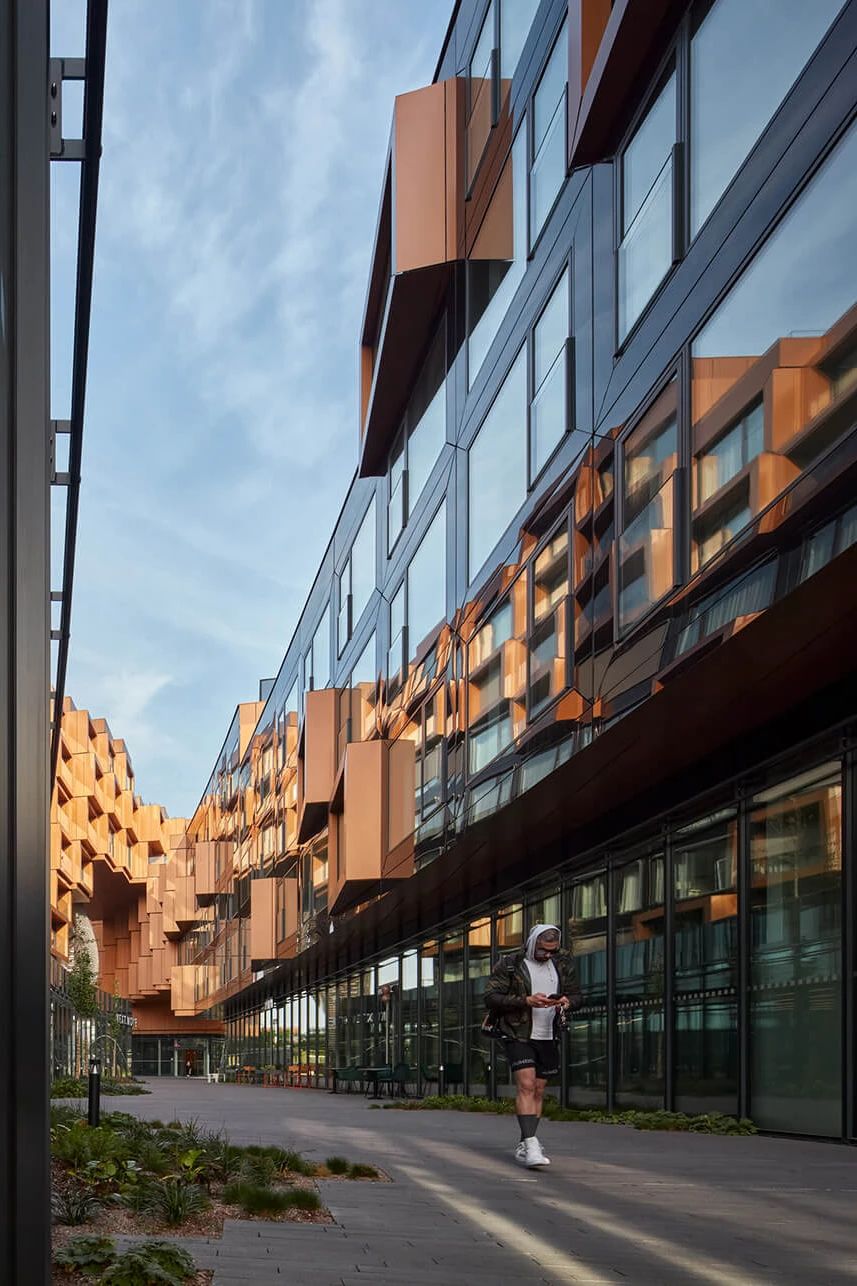 Window frame style building facade©Boys PlayNic
Window frame style building facade©Boys PlayNic
As a form of communication with the constantly changing development scale and other environmental factors in the surrounding area, the building volume has been carefully reduced layer by layer. Its purpose is twofold: on one hand, to alleviate the traffic pressure on the banks of the Rohaneska River, and on the other hand, to fully utilize the pleasant characteristics of the local environment, such as being adjacent to the Kezil Orchard, or to appreciate important landmarks nearby, such as the beautiful scenery of Mount Vitkov.
The layered form of the building also helps optimize the position of each apartment and courtyard relative to the movement of the sun. The courtyard is open, allowing the space to expand and remain dynamic. The boxes protruding from different positions above and below the building form a light and shadow game, enhancing the perception of changes in the building facade and form over time. From a human perspective, these boxes help to break down the building's volume and make it closer to human scale.


Fragmented Art Installation©Boys PlayWic
Openness and transparency are key themes in design. The spatial relationship with the historic Invalidovna building and park is crucial in terms of continuity, permeability, and overall improvement of public space, forming a natural flow path between the two buildings. At the entrance, the building is cut open and hollowed out.
Visitors enter a spacious space from here, featuring sculptures, greenery, and water features, providing a peaceful and relaxing atmosphere for residents and the public. The building is open to pedestrians in this direction. The public can also enter the lower level space, where there are small shops and various service facilities. The courtyard is a quiet place, partially paved with ground and partially covered with vegetation, including the roof and first floor.


Fragmented Art Installation©Boys PlayNic
Fragment Apartment offers three different sizes of independent rental units: small, medium, and large. Each 3.8-meter x 3.1-meter building 'box' contains a room, which can be combined together to form a larger unit. This design emphasizes rational planning and layout for easy maintenance and management.
For a dynamic building, structure is a key attribute. Initially, architects considered adopting a complex prefabricated solution, starting from conceptual design, followed by optimization, and then transported to the site for assembly, including prefabricated bathrooms.
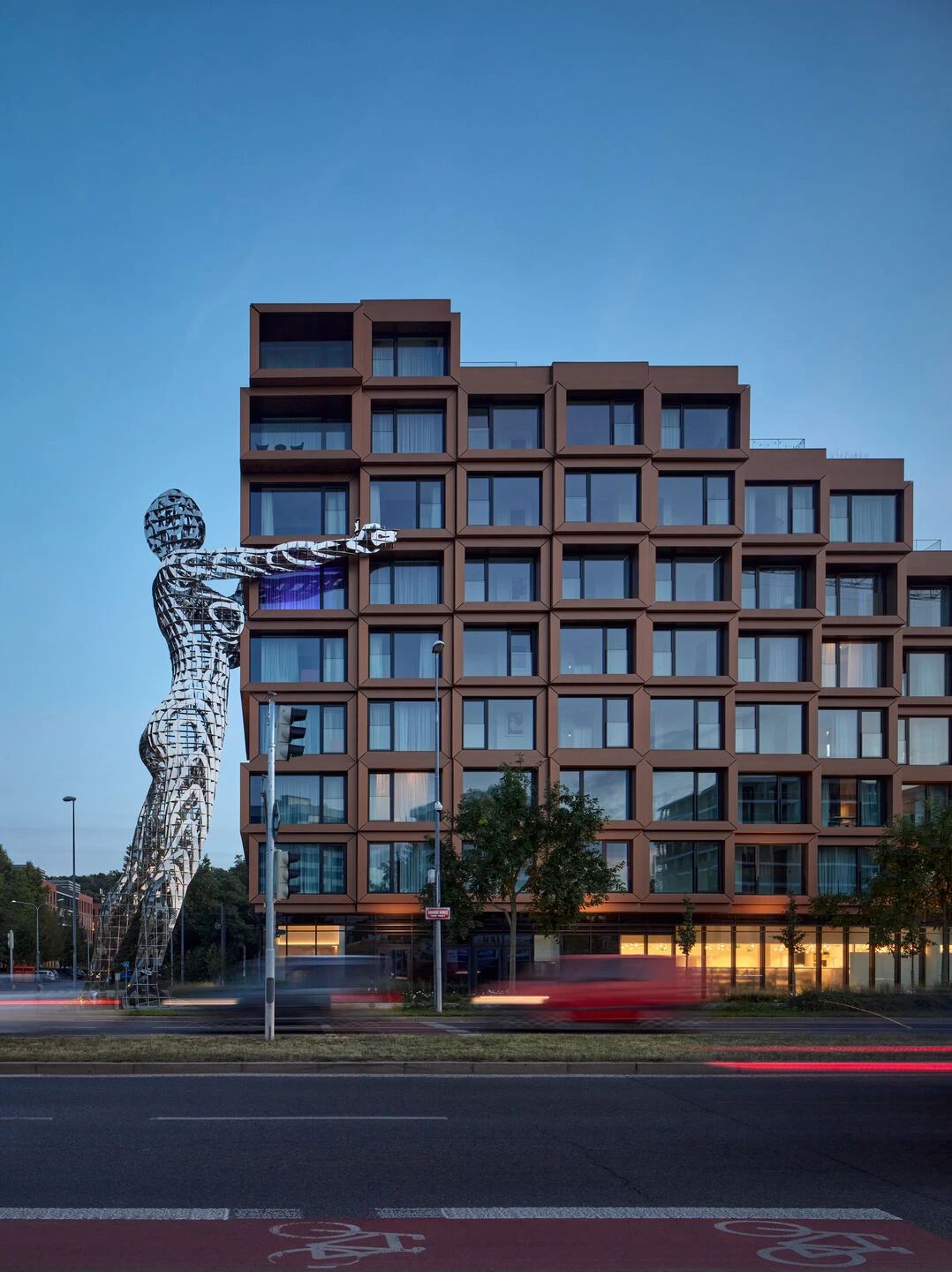

Architectural night view©Boys PlayWic
The architect said, "Throughout the entire process, what we value the most is that the architectural form has not changed from the initial sketch to the final construction. This is not only for aesthetic considerations, but also for technical considerations.”
Various technical solutions have been considered for building facades. The most important thing is to maintain the shape and proportion of the original box and balcony. All details must be seamless, aesthetically pleasing, and function properly. That's why most of the construction is done in factories, almost like mechanical engineering. The Shard Building is no exception. During the assembly process, due to technical reasons, install the household first, and then install the ventilation facade.
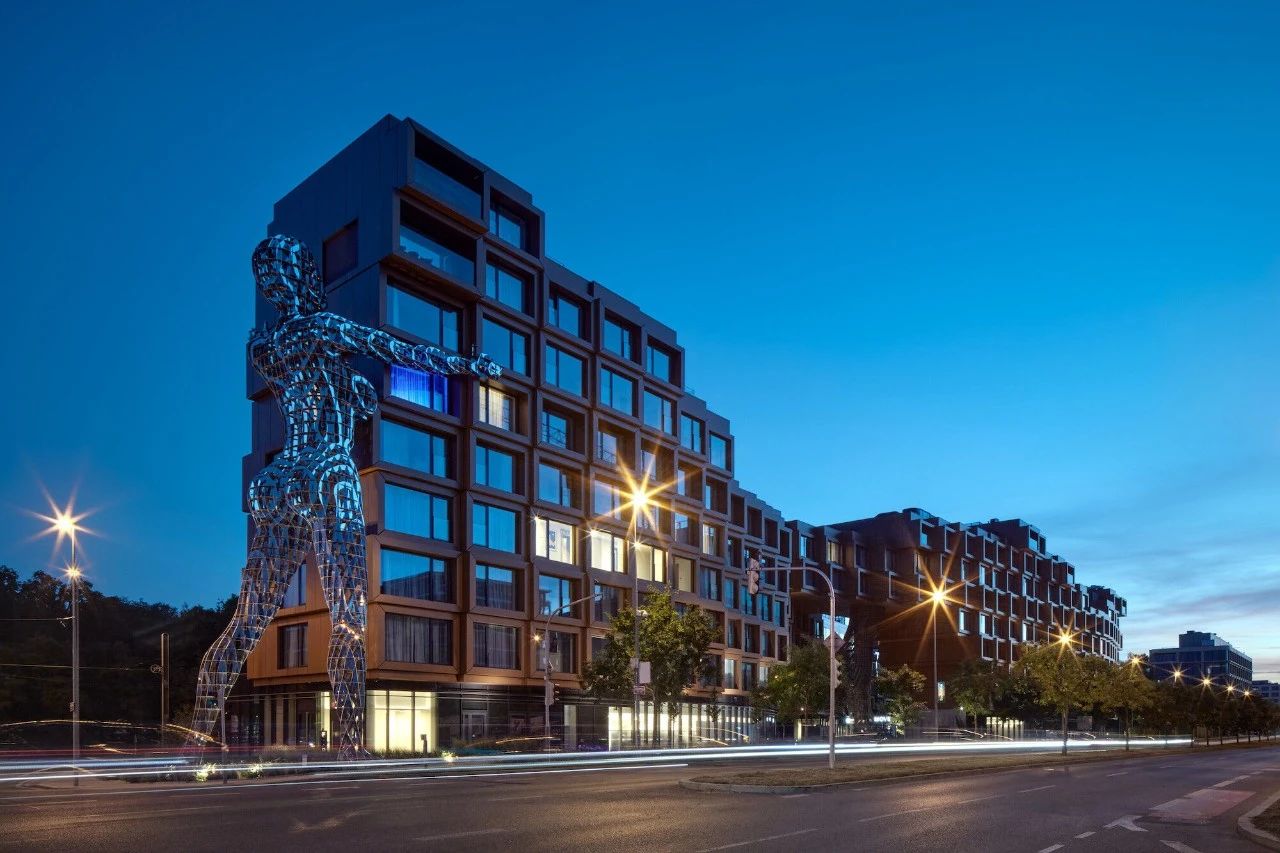
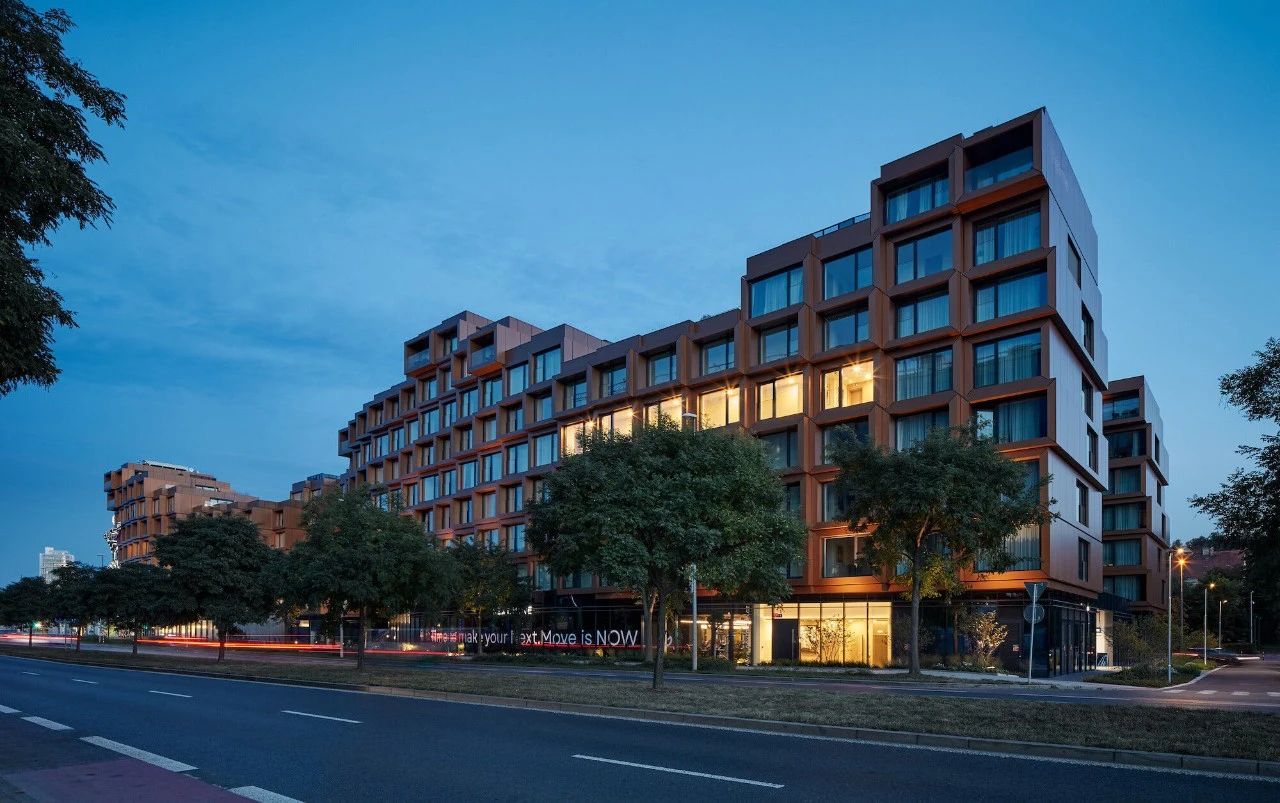
Architectural night view ©Boys PlayNic
The exterior facade of the building is mainly made of aluminum composite panels. This window frame style surface is directly exposed to the natural environment, creating a constantly changing characteristic and a vibrant architectural pattern. Make the city and buildings full of vitality.
Zoetermeer City Hall
Common Affairs Architects
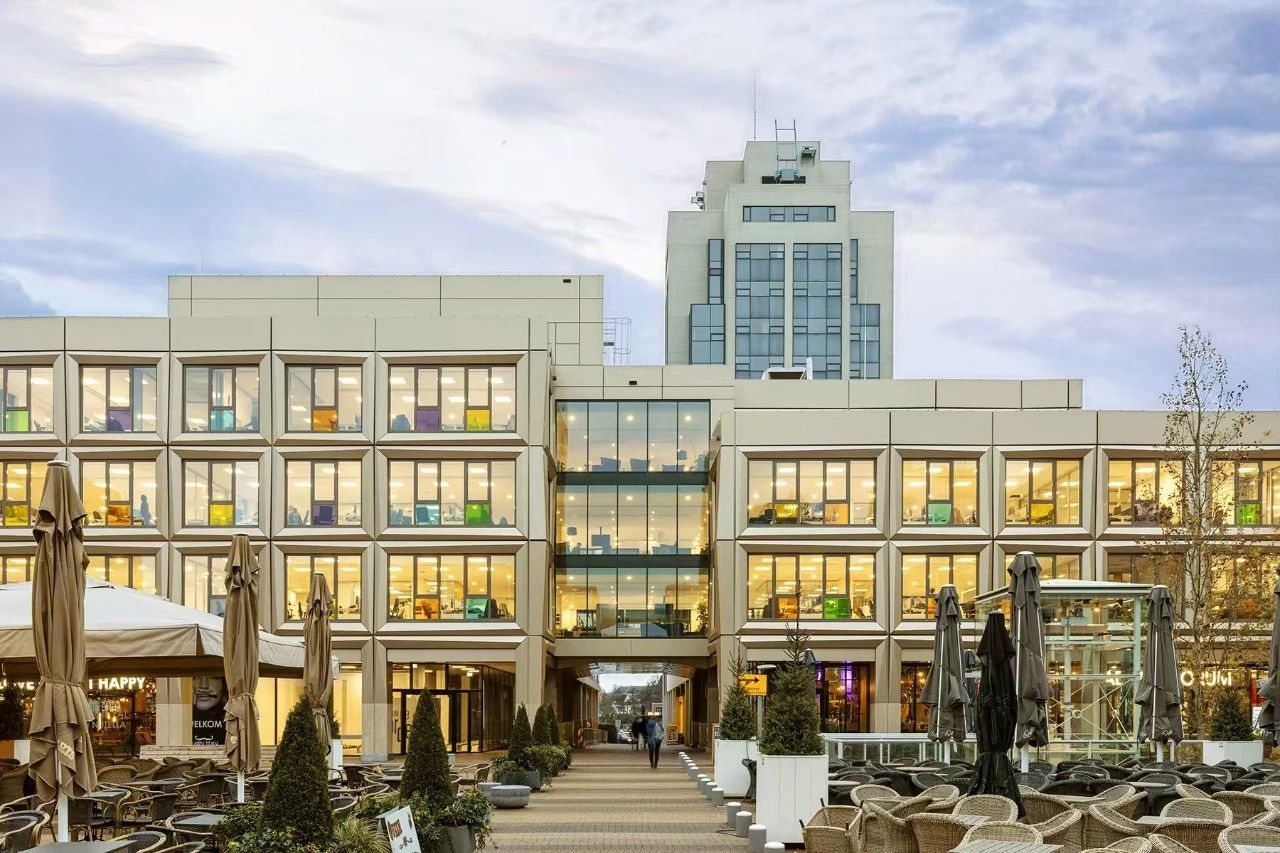
Zotemel City Hall Window Frame Facade © Common Affairs
The architects of Common Affairs have carried out a large-scale renovation of an 80s town hall in Zoetmyr, Netherlands. 80% of the buildings in Zutermeier are beige, which was the most widely used color of small tiles in the 1960s and 1970s, and the exterior walls of the city hall are also the same.
The old city hall and main library were built in 1983 and designed by municipal architect Frans de Man. He designed a concrete building with an "open structure" that would facilitate future adjustments. About 40 years later, the concrete structure of the building became the key to facade renovation.

Zotemel City Hall Window Frame Facade©Common Affairs
The renovation of existing buildings has also made them more sustainable, and the renovated exterior walls have been replaced by lightweight, detachable, high-quality aluminum composite panels. These composite panels have been endowed with champagne gold, which matches the beige color of the surrounding buildings and adds a touch of color to the city hall and library.
The architect boldly chose champagne colored aluminum composite material as the facade decoration material for this renovation. In terms of shape, the rough "window frame design" is used to cover the original walls, making the entire building look lighter. At the same time, the randomly folded borders also create a dynamic picture, making the building facade look more dynamic.


Window frame style building facade details©Common Affairs
The facade on one side of the square is equipped with an area containing colored glass. At night, the building appears very transparent, and these colored glass surfaces bring a lively and vivid image to the building. At the same time, the building's sustainable energy label G has been converted to an energy label A+, revitalizing this nearly 50 year old building.